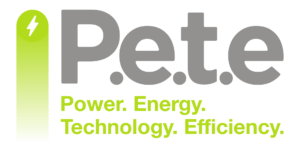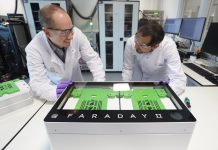
The companies are installing 500 ‘smart’ hot water tanks alongside 100 lithium-ion batteries in homes across Cornwall and London. They will aggregate their flexibility and sell it into DSR programmes such as frequency response and demand turn up.
Batteries are prime assets for frequency response, as they can quickly react to frequency deviations in either direction, helping to maintain National Grid system stability.
Hot water tanks are equally suitable assets for schemes such as demand turn up, which helps the System Operator cope when there is too much power on the system, and too little demand.
The P.e.t.e project (which stands for power, energy, technology, efficiency) will install 50 batteries by the end of 2017. Over the next two years, water tanks and batteries totalling around 1MW of flexible capacity will be installed. 
As well as providing services to National Grid, some of the aggregated capacity will be used to help balance local networks, as distribution network operators push towards system operator models. The project will also investigate energy trading and peak shaving revenue streams and business models.
Other organisations involved in the trial include the Eden Project and the University of Oxford, alongside one of the University’s spin-out companies, Mixergy, which is behind the intelligent hot water tanks.
Unlocking domestic market
Efforts to scale demand-side response have so far focused on the business market.
While there are challenges to solve in the domestic market – particularly around metering, frequency measurement, testing and contractual arrangements – Upside Energy founder and chief scientist, Graham Oakes, believes household DSR is on the cusp of viability, and could potentially take off more quickly than the small business market.

“Domestic DSR needs different consumer protections, different means of creating and managing scale and reliability of supply, different technical approaches. But these are all feasible now,” he said.
The company hopes the P.e.t.e project will prove that and sow the seeds for broader take-up by property owners in both the public and private sector.
“There are lots of players positioning for this: Tesla Powerwall, Nissan, Sonnen in Germany, Chinese manufacturers like BYD are positioning for this market because they can see it happening,” Oakes told The Energyst.
“What will bring these manufacturers into the market is deals with social landlords that order several hundred units at a time, demonstrating there is a market out there. Then they will build the kit that can be sold to owner occupiers.”
- Graham Oakes outlines some of the challenges of aggregating small loads in The Energyst’s new 2017 DSR report. Download it here, free of charge.
Related stories:
Artificial Intelligence for smart grids: can UK start-up beat Google?
Aggregator targets small firms to build DSR from bottom up
Follow us at @EnergystMedia. For regular bulletins, sign up for the free newsletter.




I am a solar PV installer with a domestic customer interested in having a battery installed alongside his PV, with some kind of incentive from a demand side response type of scheme.
I’ve heard mention of such things in theory but haven’t found anything concrete. Can anyone tell me where I can find out who is offering anything like this?